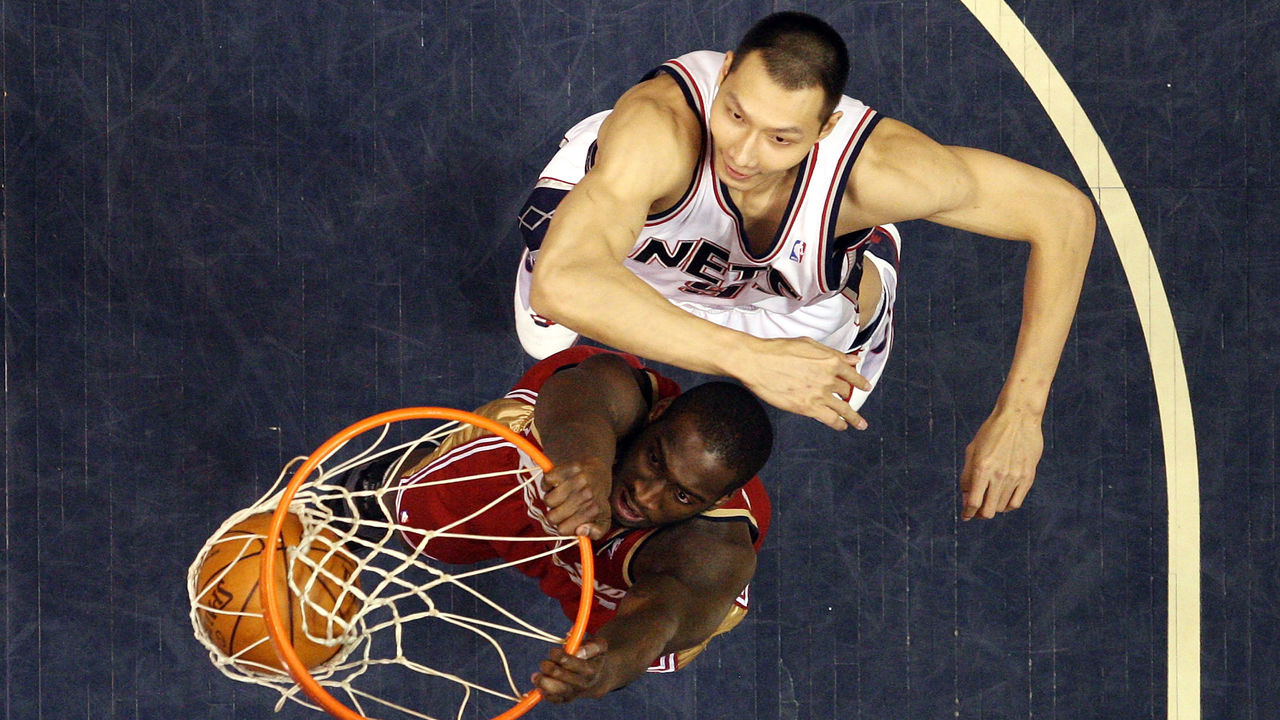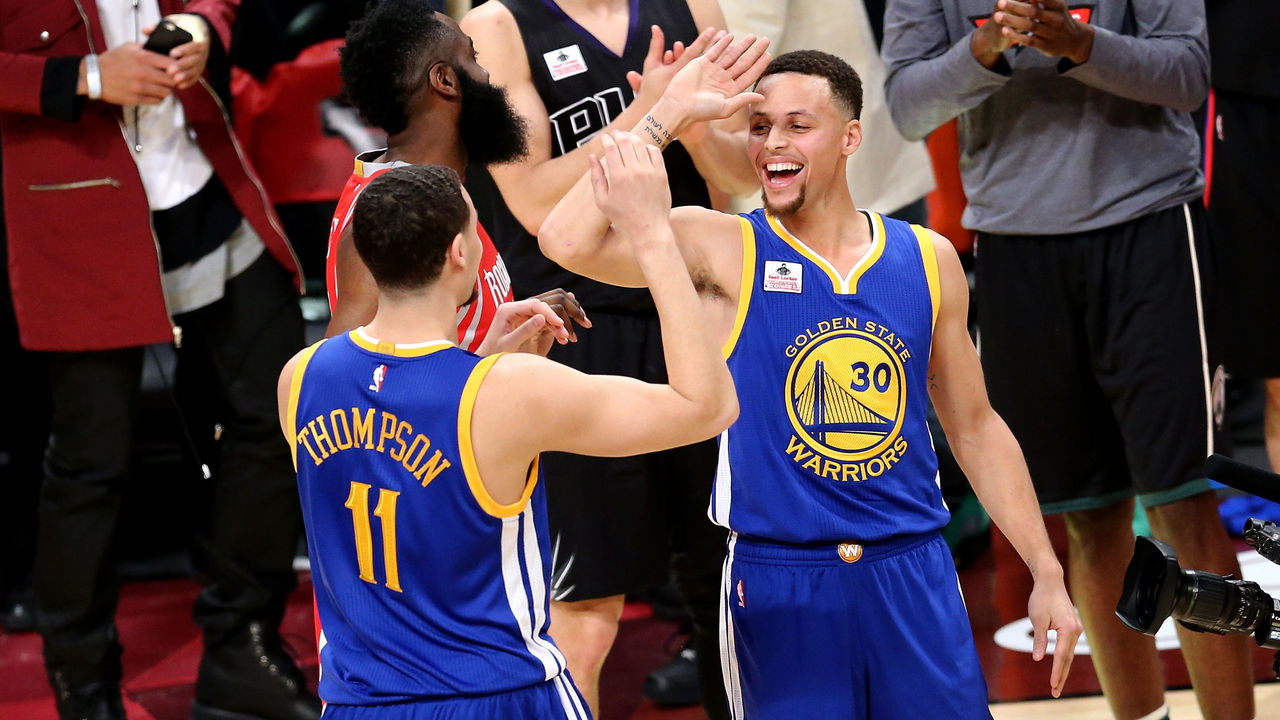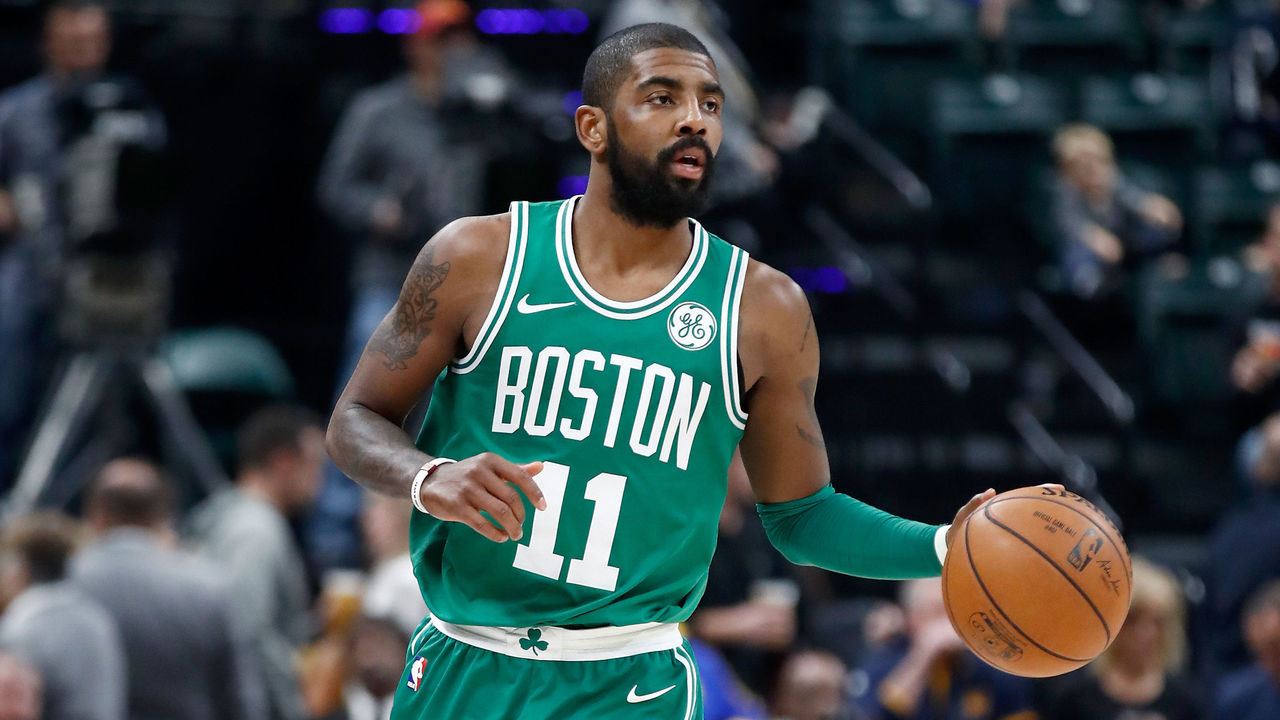Assessing the NBA trade deadline and the perils of the "untouchable" tag
Toward the end of the 2009-10 season, Rodrigue Beaubois faced off against Stephen Curry in Golden State.
Beaubois, a rookie taken 25th overall in the 2009 NBA draft, scored a career-high 40 points, making nine 3-pointers in a win over Curry's Warriors. It cemented Beaubois’ status as the future star of the Mavericks.
“There’s maybe one or two guys in the league that I would trade him for,” Mavs owner Mark Cuban said a month earlier. “That’s it. Other than that, he’s pretty much untouchable.”
Seven years later, Beaubois is a member of Baskonia of the Liga ACB in Spain. Curry is a two-time Most Valuable Player and arguably the greatest shooter in league history.
Their careers are by no means intrinsically linked, but the story of Beaubois and Curry is the perfect example of how the untouchable label can impact the long-term future of a team, and that sometimes it’s the trades you don’t make that end up dictating the direction of your franchise, for better or worse.
__________

J.J. Hickson is a name to which most NBA fans probably don’t pay much attention. In eight seasons with five teams, Hickson averaged 9.5 points and 6.8 rebounds in 534 games.
He was also once deemed untouchable by the Cleveland Cavaliers.
In LeBron James’ first seven seasons with the team, the Cavs front office tried everything to put the team over the top, signing Larry Hughes, Damon Jones and Donyell Marshall, and trading for Shaquille O’Neal and Ben Wallace.
By the trade deadline of the 2009-10 season, the Cavs were on their way to another first-place finish in the East with 61 wins, a season after finishing with 66 Ws. But after making the Finals in 2007, Cleveland had lost to Boston and Orlando in the playoffs the two previous seasons.
With James heading to free agency in the summer, the Cavs were looking to upgrade at the power forward spot at the trade deadline to not only strengthen their position as the favorites to make the Finals, but to entice their superstar to re-sign.
Selected 19th overall in 2008, Hickson was called close to untouchable in a report a week before the 2010 trade deadline. The Cavs had zeroed in on Amar'e Stoudemire, who averaged 23.1 points and 8.9 rebounds for the Phoenix Suns that season.
In exchange, as reported by ESPN at the time, Hickson and Zydrunas Ilgauskas would be headed to Phoenix. The potential deal was reportedly shut down by owner Dan Gilbert because of Stoudemire’s impending free agency and the team’s hesitance to part with Hickson.
Pairing James with, at the time, one of the best power forwards in the league was apparently not enough. Instead, the Cavs acquired Antawn Jamison from Washington.
Cleveland entered the postseason as the top seed in the East, but were beaten in six games in the second round by the Celtics. In an elimination Game 6 in Boston, James had 27 points, 19 rebounds, and 10 assists. Jamison was 2-for-10 from the field and scored five points in 29 minutes. Hickson played just 10 seconds.
In the summer, James signed with the Miami Heat. A year later, the Cavs traded Hickson to Sacramento for Omri Casspi and a first-round pick.
__________

As he suffered through multiple ankle injuries early in his career, no one could have envisioned Curry as a franchise player, let alone one of the NBA's true game-changers. An untouchable player, if you will, in every sense of the word.
Because of his lack of durability, the Warriors were able to sign Curry to a four-year, $42-million extension in 2012 which financially played a part in creating the opportunity to lure Kevin Durant in free agency two summers ago.
Once upon a time, the Warriors were divided on who to trade from their dynamic backcourt: Curry or Monta Ellis. The choice is obvious now, but at the time, Ellis was the more reliable player, and appeared to have a higher ceiling than Curry, who couldn’t stay on the court. In the end, the Warriors made the right choice by trading Ellis to Milwaukee for Andrew Bogut, who was an integral part of their 2014-15 championship team.
Just as important as choosing the right star player to trade is the timing of it. Most of the untouchable players in the league are not Hickson or Beaubois; they are the superstars, the best players on every team.
The New York Knicks held on to Carmelo Anthony for years, mostly because Phil Jackson rewarded him with a no-trade clause that limited the team’s ability to deal him at the deadline. The relationship deteriorated to the point where the Knicks - who once thought they could get a superstar in return for Anthony - traded him to Oklahoma City before the start of the season.
On the other hand, sometimes teams remove the untouchable label from their star players and reap the benefits. In 2011, Utah traded star point guard Deron Williams to the New Jersey Nets when he had a year left on his contract. They acquired Derrick Favors, Devin Harris, and two first-round picks which helped jump-start their rebuilding process.
The L.A. Clippers made a similar move this week. After signing Blake Griffin to a five-year, $171-million contract this summer, including a presentation that raised Griffin’s jersey to the rafter in a mock retirement ceremony, the Clippers traded their 28-year-old star to the Detroit Pistons for a package of players and draft picks.
Similar to Williams and the Jazz, the Clippers decided to start a rebuild early before a player’s age and decline forced their hand. They made a tough decision now to help them make easier choices down the line. It required them to remove the untouchable label from their best player.
__________

Whether it’s an up-and-coming player or a superstar, the untouchable label is placed on many around the league. Sometimes, it’s a draft pick.
For years, Celtics general manager Danny Ainge held on to the ransom of first-round draft picks he stole from the Nets in the Paul Pierce-Kevin Garnett trade. Finally, last summer, he traded Brooklyn’s 2018 first-round pick to the Cavs as part of a trade package to acquire Kyrie Irving.
It’s déjà vu for the Cavaliers as the team nears the Feb. 8 trade deadline. With Kevin Love out for up to two months with a broken left hand and Isaiah Thomas still finding his rhythm after returning from a hip injury, the Cavs are in the market for an upgrade, with James heading to free agency this summer.
Trading for George Hill or DeAndre Jordan would provide that upgrade, but will it make a difference if they face off against the Warriors in the Finals? Will it help them win the Eastern Conference for the fourth straight year? Will it be worth it to trade the Brooklyn pick to acquire a player?
The answer might lie in the fact the trade deadline isn’t as much a chance for the Cavs to assemble a title-winning team as it is the beginning of their recruiting pitch for James this summer. After all, Rasheed Wallace to Detroit and Clyde Drexler to Houston aside, how many deadline deals of the last 25 years have made a direct impact on a team’s immediate title run?
The trade deadline is very much about making the right move and not the wrong one. And that requires figuring out exactly who is untouchable. They will be decisions that will be hard to evaluate right away, but will chart the course for many franchises for the foreseeable future.
Alex Wong is an NBA freelance writer whose work has appeared in GQ, The New Yorker, Sports on Earth, and Complex, among other publications.
(Photos courtesy: Getty Images)